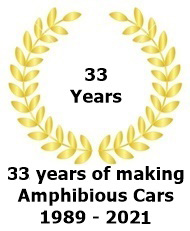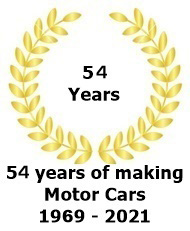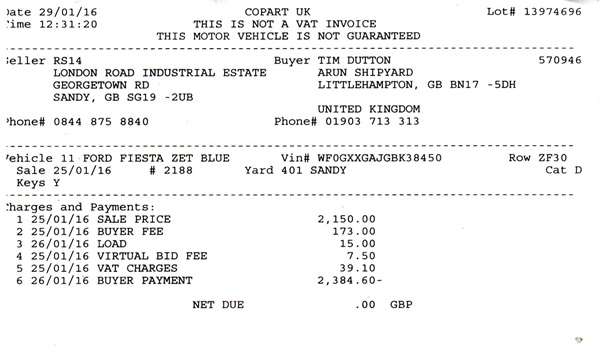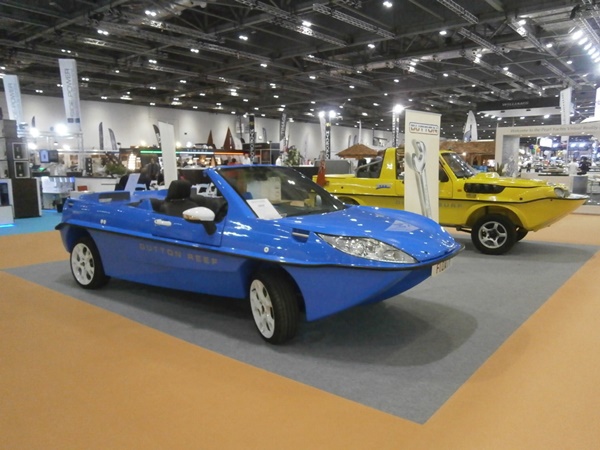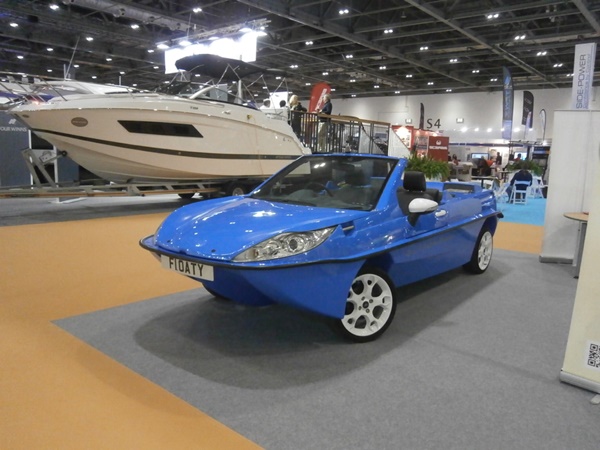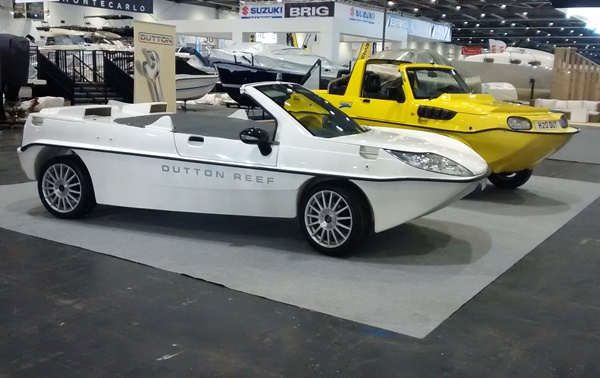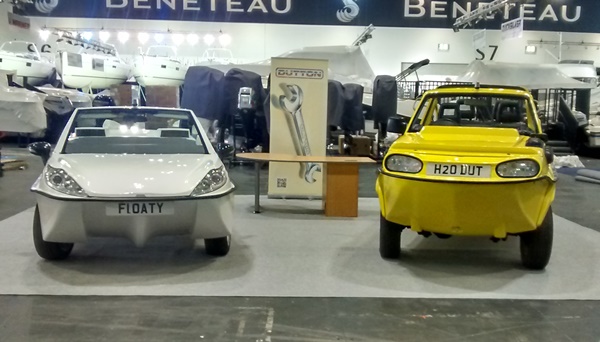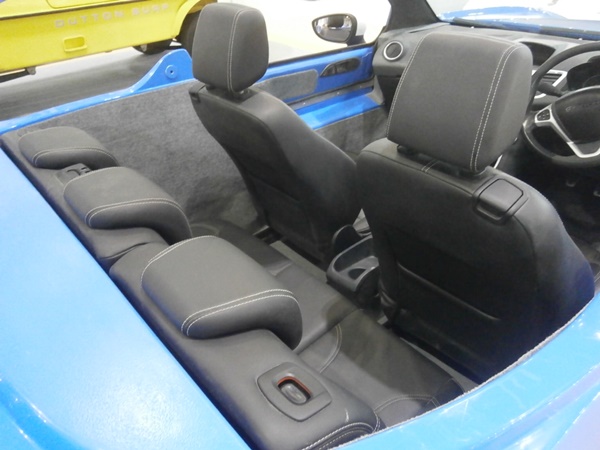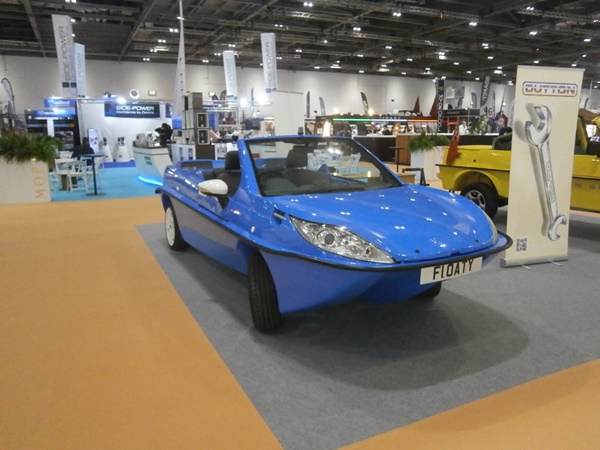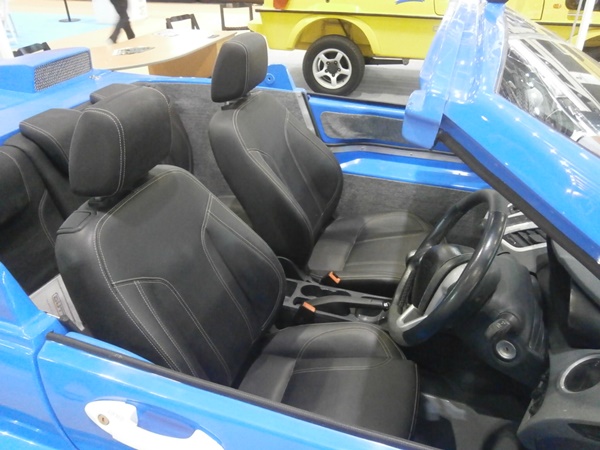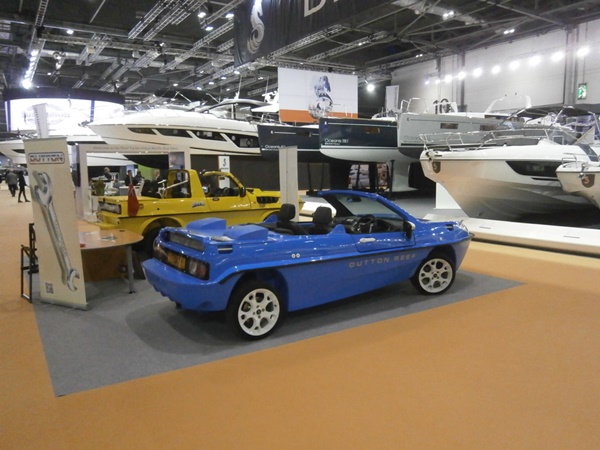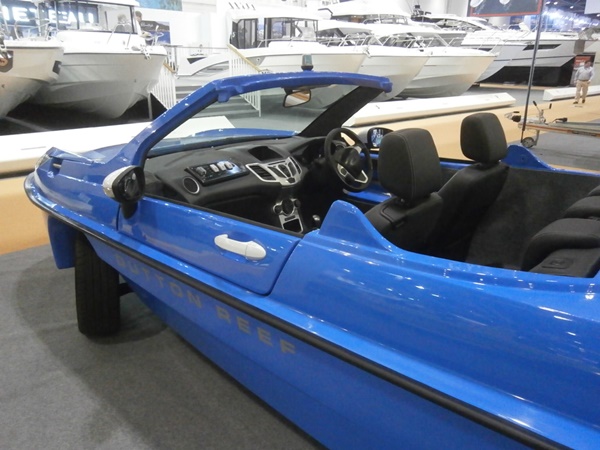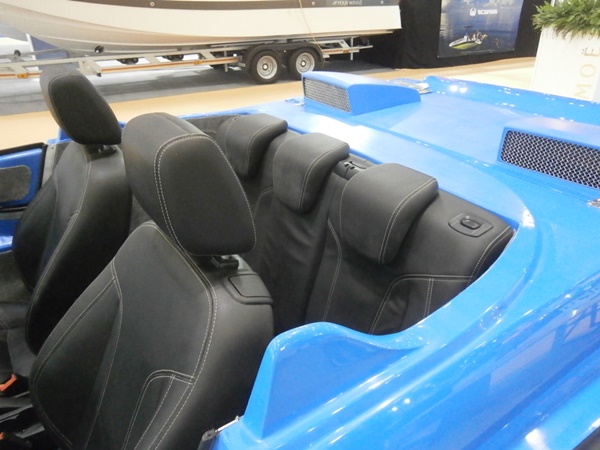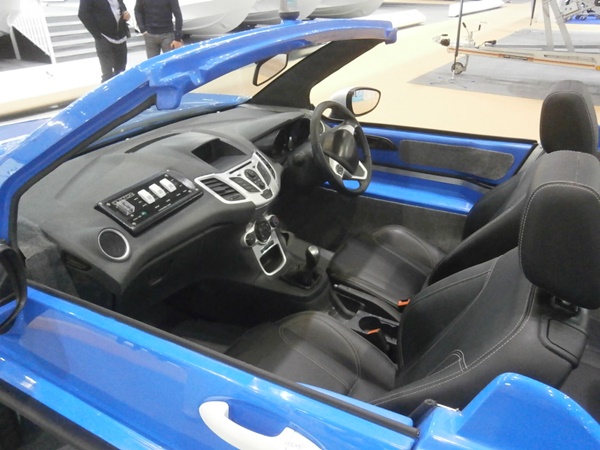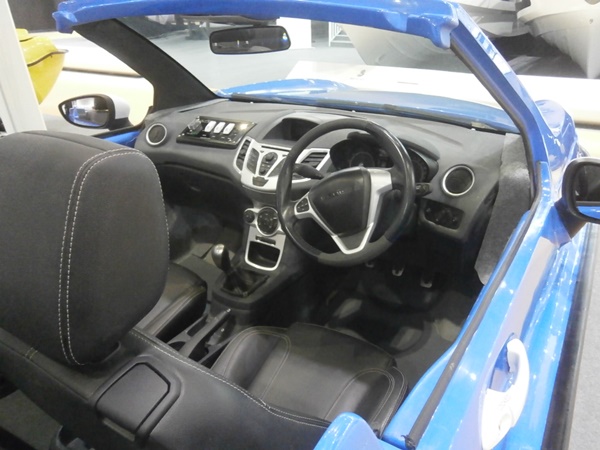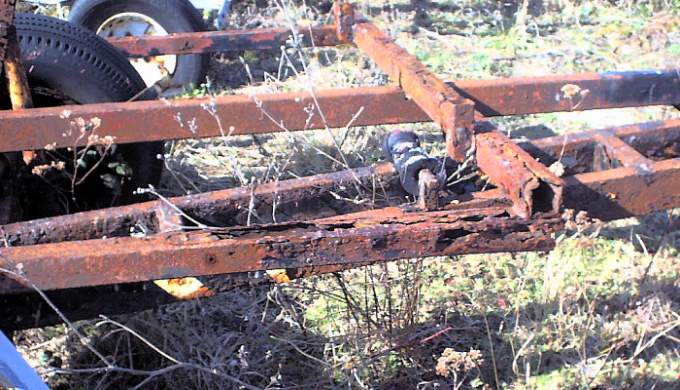|
 |
|
|
 |
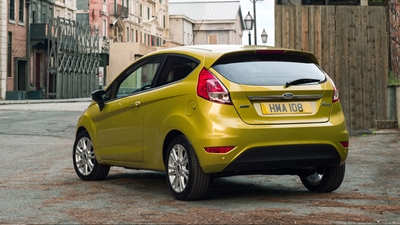 |
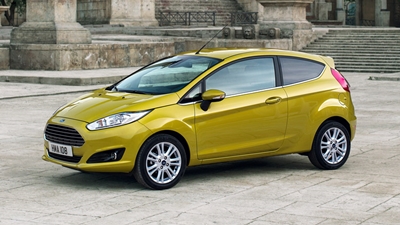 |
| European Spec Fiesta |
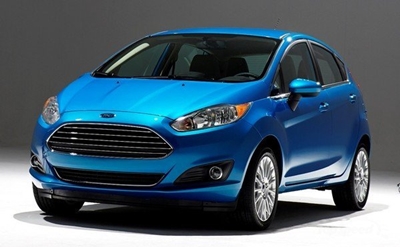 |
| American Spec Fiesta |
|
|
|
 |
| THE MARINE SIDE |
|
Speed in water
According to the official press release in the 1960's the maximum speed in water for the Amphicar was quoted as
"Wasserfahrt: -Hoechstgeschwindigkeit 10km/h" (6.2mph/5.4knots). No manufacturer would deliberately undersell his
product therefore it is fairly safe to assume that 6.2 mph is in fact the max speed you will ever get out of an Amphicar. You
might have thought that with over 40 years more development that we could better this - well you can't. Water speed for a
DISPLACEMENT HULL is a function of the square root of the water line in metres multiplied by 2.8 for mph, 2.4 for knots or 4.5
for kph. The Reef (with its upgraded jet from 6" to 8" diameter ) has a speed of approx 6mph, which ties in very
neatly with the above formula and is impressive considering the extra carrying capacity, size and specification compared with
the much smaller 2wd Amphicar.
|
|
|
The rear lamps/number plate on the Reef are protected with high impact 5/16" (8mm) clear acrylic plastic so they do not
contact the water.
Special attention has been paid to the sealing of the steering arms and drive shafts these incorporate high grade
"sealed for life" stainless steel ball bearings with integral rubber seals (these are the only components going thru
the hull).
To eliminate the need for a mild steel chassis the hull and deck are manufactured as one piece mouldings which are then
bonded together to form a single homogeneous monocoque self coloured structure, all the load bearing areas - engine, gearbox,
steering, f/r suspension, dampers, springs etc - have marine grade stainless steel spreader plates imbedded into the laminate.
The advantage of a self coloured modern plastic composite is that it can be repaired and scratches easily rubbed out. An
anti-slip pattern is moulded into various areas of the deck as an aid to safety. Being plastic composite there is never any
need to wash the car regardless of whether it has been in fresh or salt water.
|
|
|
New REEF assembly manual now
available
The full colour Dutton REEF Assembly Manual is also available as a PDF file from us. We recommend not printing off the
manual until you have the kit in front of you as we are constanly improving it. Click HERE to get it.
|
|
ATTENTION TO DETAIL
Some funny things happen when you put a car in water, here are a few and our solutions to them:-
|
|
Exhaust system
- If you have ever tried to start a car that has had it's exhaust system immersed in water you will know that you have
a major problem, this is because auto silencers are filled with fibre wadding, when this gets wet it blocks the system and
either the engine won't turn over or it starts and the exhaust blows up. To overcome the entire Reef exhaust is mounted
direct onto the engine and exits at the transom, none of the system comes into contact with water. The silencer is all
stainless steel.
Mild steel v aluminium v stainless steel
- Typically aluminium is 3 times and stainless steel 6 times more expensive than mild steel but this significant extra cost
is more than compensated for by the knowledge that your amphibious car won't simply rust away and sink before your very
eyes. It is almost impossible to imagine a more inappropriate material to make an amphibious car out of than mild steel
unless of course you want it to end up looking like a colander. And to make the point this picture shows a typical old boat
trailer made from mild steel ( AND it was galvanized) - just imagine what a normal mild steel chassis or body would end up
like.
|
|
|
|
- It is a fact that all ferrous metals, if unprotected, will corrode by the natural process in which iron is converted back
to it's naturally occurring form of iron oxide under the influence of water and oxygen. Therefore corrosion would not
occur if the steel could be coated with a film which is completely impervious to water or to oxygen since both are required
for corrosion reactions. The front and rear suspension (the only Ford parts on the "wet" side) are completely
stripped and painted with 3 coats of marine phosphate primer, marine under coat and marine topcoat. All components we fit
(including nuts & bolts) on the "wet" side of the car are all manufactured from marine quality AISI 316
stainless steel. With stainless steel the anodic reaction leads to the formation of an oxide film, this so called
"passive oxide film" is insoluble in water and hence the metal is well protected and can be left in it's
natural state.
Why plastic?
- It's really hard to believe that only 60 years ago (when plastic had already been invented) that someone would
actually be paid to sit down and deliberately design and build an amphibious car out of highly corrosive mild steel but that
is exactly what they did in the 1960's with the Amphicar and the results are all to obvious today - at one extreme rusty
cars that leak and at other end of the extreme - immaculate cars that the owners won't take into water in case they start
to rust and leak again. Have you any idea how annoying and time consuming it is to have to thoroughly wash down a mild steel
hulled car with a high-pressure fresh water hose every time it comes out of the water? - And that's assuming that there
is a standpipe near the slip in the first place. With a plastic car you NEVER have to wash it down.
Radiator
- On some amphibious cars the radiator is stuck out right at the front so if you ever nudge anything the first item to get
smashed is the radiator. In the Reef the radiator is inside the rear engine bay.
SERVICING
The only major Ford component (gearbox imput shaft) is modified which means that if any servicing /repair work is required
any competent garage can undertake it, also spares will be available anywhere in the World where the Ford is sold. We recommend
that once a year (normally at the end of the season) The underside of the car is examined, in particular the steel suspension
components and if they have been scratched and the paint removed they are cleaned up and high quality marine paint
re-applied.
|
|
| SPECIFICATIONS (typical) |
Proper doors (can you imagine getting into an
amphib with the weather equipment on with no doors? - or even more importantly trying to get out quickly in an emergency). The
Reef doors open ABOVE the water line so can be opened safely when the car is in the water.
4 seater 2 door
proper lockable easy access doors
Electric power steering
Left or Right hand drive.
5 speed gearbox.
Clock.
Fully reclining front seats with head rests.
2 rear seats with 3 point seat belts.
Vanity mirror on sun visor with operating instructions.
9 gallon/42L fuel tank.
Diagonally split dual brake system, servo, disc front, disc rear.
Central locking.
Remote locking.
Radio/CD player.
|
17" Aluminium spoke wheels with 205/40 tyres.
1 internal, 2 external electric mirrors.
Halogen headlamps, hazard warning, rear fog, reversing and side repeaters.
2 speed wipers and delay.
Speedo, rev counter, fuel gauge, water temp.
Full set of Reef logos.
3 speed heater fan
3 bilge pumps with auto float switches.
Red/green/white navigation lamp.
Front stainless steel tow eye.
Rear boarding platform.
4 grab handles.
|
|


